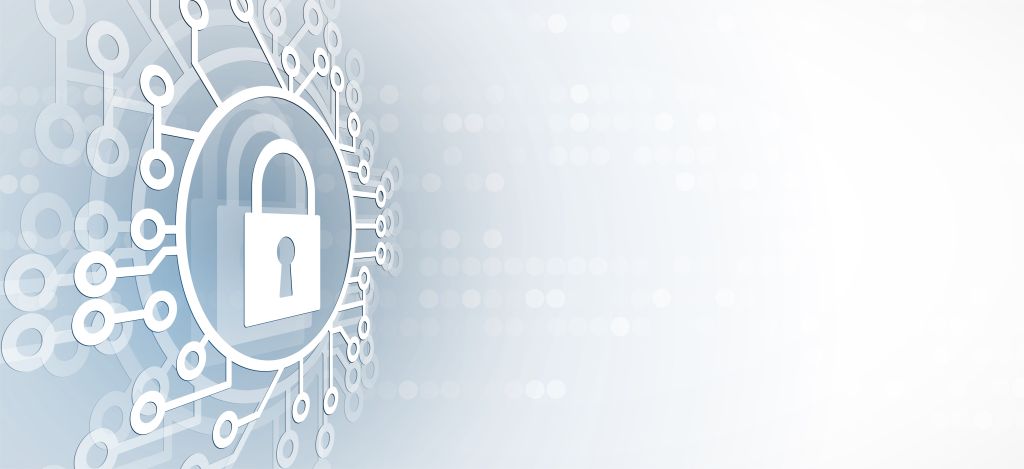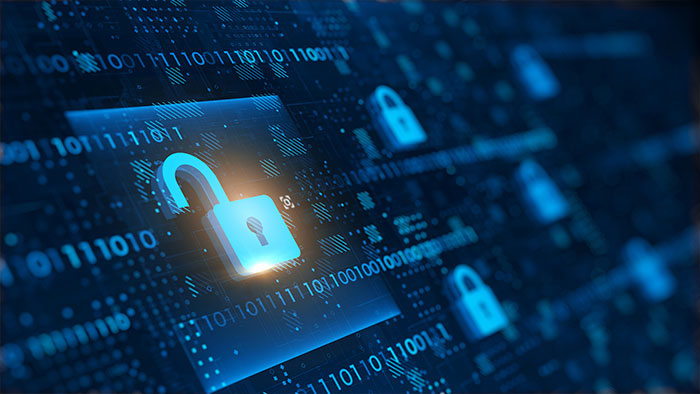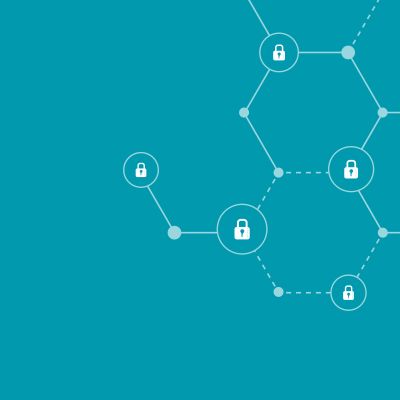Data and keeping it safe go hand-in-hand. And today, more of the world is online and more data is being created than ever before. In the second blog in our series covering all things data, we’re looking at the world of cybersecurity and discovering the impact it has on us all. Whether your data is big or small, national, international, business-specific, or personal, cybersecurity is an area that helps to keep everyone safe.
What is cybersecurity?
The classic image in the movies is of cybersecurity defenders and attackers playing cat and mouse in front of screens with rapidly scrolling text. While there is a degree of truth to this image, cybersecurity is a much broader sphere and one that we all have a role to play within.
There are many different programmes and tools under the rapidly expanding cybersecurity umbrella. In the UK, the government’s National Cyber Security Centre (NCSC) defines cybersecurity as “how individuals and organisations reduce the risk of cyber attack.” Cybersecurity is as much a mindset as it is a collection of tools used to achieve it.
When we talk about protecting data, this naturally includes ensuring the protection of the devices and the services we all use to process that data. Most tech users will find their data is spread between smartphones, laptops, desktops and servers making it hard to keep track of. This is all against the uneven playing field where an attacker only needs to find one weakness in any of those to be successful, whereas the defender needs to keep every one of them 100% secure all the time.

Why is cybersecurity important?
According to IBM Security, the average cost of a data breach in the UK is £3.2 million, proving that data — and the cost to put a breach right afterwards — is a highly valuable commodity and a huge responsibility to hold. You only have to search for high-profile cyber attacks and you can quickly find news of organisations of all kinds and sizes falling victim to cybercrime. Ransomware can attack the smallest organisation or the largest government body, and they each risk being held liable for large sums of money payable both to the attacker and to put right any harm done to the individuals whose data was leaked so it’s easy to see why cybersecurity is so crucial.
It’s not only the cost factor that makes data breaches so dangerous — your brand is on the line. Personal data is essentially a currency for brands and businesses, given in exchange for trust. And when that trust is broken, it can be hard to regain and can affect your business for a much longer period than resolving the actual breach.

What data needs protecting?
Right now, it’s estimated that 328.77 million terabytes of data are produced every single day. Customers trust organisations with their personal information, also called personally identifiable information, or PII. Think of everything you share with an online retailer when you purchase from them, all that data adds up to a lot of personal information. Your name, address, financial details and possibly more are all held on servers for them, and it’s the retailer’s responsibility to keep that data safe. By exposing that data to risk, it threatens both the individual’s privacy and the retailer’s livelihood.
And it’s not just online retailers that need to consider the risks of holding personal information. All businesses have a legal and ethical responsibility to protect their customers’, and employees, data. Organisations handling more sensitive information such as national security and health matters must ensure particularly strong data protection measures are in place. On a smaller but still crucial scale, solicitors, for example, can be hit by cyber attacks that prevent housing transactions from completing, having a real-world impact on people’s lives. The number of different kinds of data is countless, but it must all be protected.
The future of cybersecurity
What are the themes to watch? It depends on your industry, as the types of programmes and systems available are always changing and improving. Whether it’s technology such as firewalls, regulation such as GDPR or more, here are some trends to watch.
- E2EE: also known as end-to-end encryption, this technology allows data to be protected for the entire journey. It’s a technology growing in use and can be seen in applications beyond mobile messaging.
- GenAI: generative artificial intelligence is a huge area for cybersecurity development as it can pick out the needle in a haystack. It’s also a potential area of risk, as attackers use tools to make attacks that learn on-the-fly and can customise attacks.
- Quantum computing: another tool that can be both a positive and potentially negative cybersecurity technology. Quantum computers can process at an exponentially faster rate than traditional computer systems — so will render many existing security technologies to the history books.
- Zero Trust Architecture: this is more a mindset. Build systems that add defence, and remove any shared logins.
- Laws: governments are trying to enforce cybersecurity to protect and monitor their citizens, and there are some big bills around this topic working through both UK and European parliaments.
Keep following our blog series for more updates on the future of data, web development and more.




